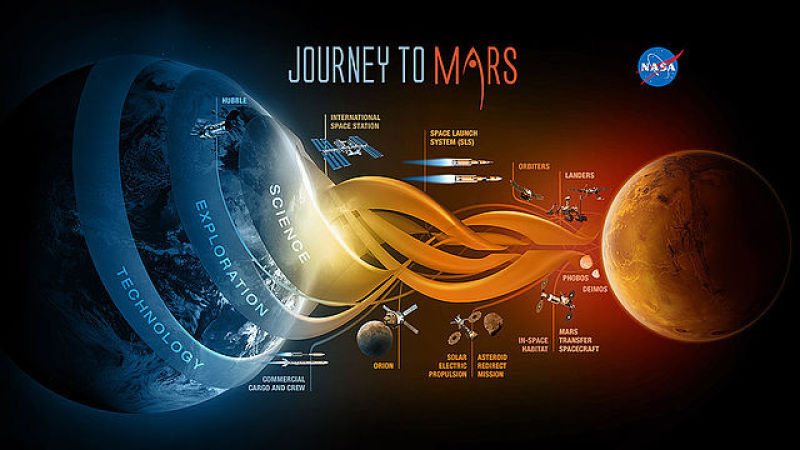
As part of its quest to send people to Mars, the National Aeronautics Space Administration (NASA) has released its comprehensive three-part plan detailing how it aims to land astronauts on the Red Planet.
According to the report by the agency, the various phases of the plan will occur within the next decades. If all goes well, NASA will be able to launch a landing mission on Mars by 2030.
As detailed in the agency's report titled "NASA's Journey to Mars: Pioneering Next Steps in Space Exploration," the first part of the plan, dubbed as Earth Reliant, is about conducting further research through the International Space Station.
In this stage, NASA will test out new technologies and concepts aboard the space station to ensure that its equipment and astronauts will perform well in deep-space missions.
NBC News reported that this phase will also analyze the effects of staying in space for a long time on humans.
The second stage, also known as Proving Ground, involves carrying out various operations in deep space environments. These will be conducted in the area around the moon called cislunar space. In this phase, NASA aims to perform a variety of assignments such as the Asteroid Redirect Mission, which is about taking a huge portion of an asteroid near Earth and bringing it back to cislunar space.
Other missions include testing out concepts that can minimize the need for astronauts to resupply while in space.
Lastly, the third phase or Earth Independent, combines what NASA has learned from Earth Reliant and Proving Ground. As its name suggests, this stage involves maintaining a sustainable lifestyle on Mars by harvesting various resources from the Red Planet such as fuel, oxygen, water and building materials.
But before landing astronauts on Mars, NASA will first send them to orbit the Red Planet land possibly one of its moons. These astronauts will then survey the conditions before heading for Mars.
But aside from living on the alien planet, this final phase also involves finding a way to transport the astronauts safely back to Earth.
Hopefully, NASA will be able to meet its deadline and successfully complete the three stages by 2030.
As stated by the space agency, it is determined to reach Mars because as revealed in the data obtained by NASA's drones and rovers, the Red Planet has certain characteristics that can sustain life.
"Mars is the horizon goal for pioneering space; it is the next tangible frontier for expanding human presence," NASA wrote in the report. "Our robotic science scouts at Mars have found valuable resources for sustaining human pioneers, such as water ice just below the surface."
"These scouts have shown that Mars' geological evolution and climate cycles were comparable to Earth's and that at one time, Mars had conditions suitable for life," the agency continued.


















